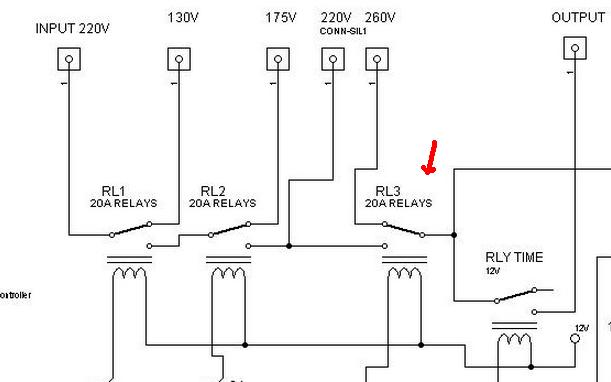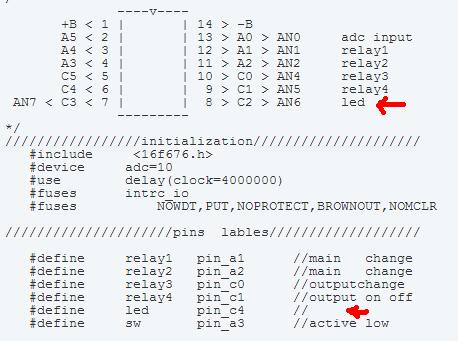sahu
Advanced Member level 2
- Joined
- Oct 9, 2009
- Messages
- 516
- Helped
- 68
- Reputation
- 130
- Reaction score
- 62
- Trophy points
- 1,308
- Location
- Uttar pradesh (INDIA)
- Activity points
- 3,876
Re: Designing Automatic Voltage Stabilizer
I change port also . as I shown in pin configuration .,
There is only 4 relays. Other is LED (rc4) and it starts blinking when out of range. If you connect a relay to this pin, it will start to do "tic tic".
I change port also . as I shown in pin configuration .,

